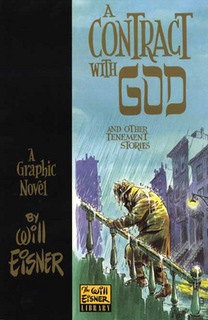
A graphic novel is a book made up of comics content. Although the word "novel" normally refers to long fictional works, the term "graphic novel" is applied broadly and includes fiction, non-fiction, and anthologized work. It is, at least in the United States, typically distinct from the term "comic book", which is generally used for comics periodicals and trade paperbacks.

Gilberto Hernández, usually credited as Gilbert Hernandez and also by the nickname Beto, is an American cartoonist. He is best known for his Palomar/Heartbreak Soup stories in Love and Rockets, an alternative comic book he shared with his brothers Jaime and Mario.
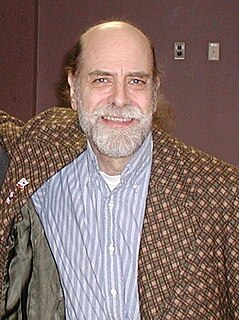
Kim Deitch is an American cartoonist who was an important figure in the underground comix movement of the 1960s, remaining active in the decades that followed with a variety of books and comics, sometimes using the pseudonym Fowlton Means.

Franklin Christenson "Chris" Ware is an American cartoonist known for his Acme Novelty Library series and the graphic novels Jimmy Corrigan, the Smartest Kid on Earth (2000), Building Stories (2012) and Rusty Brown (2019). His works explore themes of social isolation, emotional torment and depression. He tends to use a vivid color palette and realistic, meticulous detail. His lettering and images are often elaborate and sometimes evoke the ragtime era or another early 20th-century American design style.

Gregory Gallant, better known by his pen name Seth, is a Canadian cartoonist. He is best known for his series Palookaville and his mock-autobiographical graphic novel It's a Good Life, If You Don't Weaken (1996).
Autobiographical comics are autobiography in the form of comic books or comic strips. The form first became popular in the underground comix movement and has since become more widespread. It is currently most popular in Canadian, American and French comics; all artists listed below are from the US unless otherwise specified.
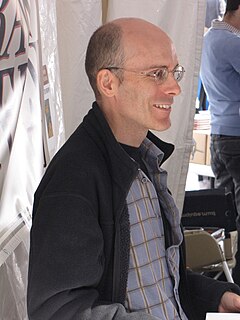
Chester William David Brown is a Canadian cartoonist.

It's a Good Life, If You Don't Weaken is a graphic novel by Canadian cartoonist Seth. It appeared in a collected volume in 1996 after serialization from 1993 to 1996 in issues #4–9 of Seth's comic book series Palookaville. The mock-autobiographical story tells of its author's obsessive search for the work of a fictional forgotten cartoonist.
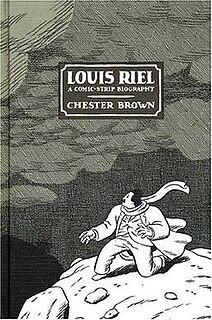
Louis Riel is a historical biography in comics by Canadian cartoonist Chester Brown, published as a book in 2003 after serializion in 1999–2003. The story deals with Métis rebel leader Louis Riel's antagonistic relationship with the newly established Canadian government. It begins shortly before the 1869 Red River Rebellion, and ends with Riel's 1885 hanging for high treason. The book explores Riel's possible schizophrenia—he believed God had named him Prophet of the New World, destined to lead the Métis people to freedom.

Gene Ha is an American comics artist and writer best known for his work on books such as Top 10 and Top 10: The Forty-Niners, with Alan Moore and Zander Cannon, for America's Best Comics, the Batman graphic novel Fortunate Son, with Gerard Jones, and The Adventures of Cyclops and Phoenix, among others. He has also drawn Global Frequency and has drawn covers for Wizard and Marvel Comics.
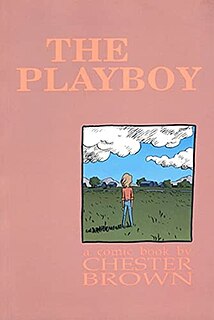
The Playboy is a graphic novel by Canadian cartoonist Chester Brown, serialized in 1990 in Brown's comic book Yummy Fur and collected in different revised book editions in 1992 and 2013. It deals with Brown's guilt and anxiety over his obsessive masturbation to Playboy Playmate models.
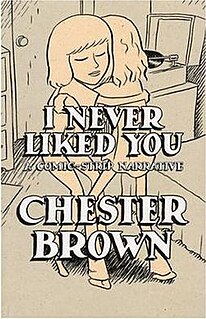
I Never Liked You is a graphic novel by Canadian cartoonist Chester Brown. The story first ran between 1991 and 1993 under the title Fuck, in issues #26–30 of Brown's comic book Yummy Fur; published in book form by Drawn & Quarterly in 1994. It deals with the teenage Brown's introversion and difficulty talking to others, especially members of the opposite sex—including his mother. The story has minimal dialogue and is sparsely narrated. The artwork is amongst the simplest in Brown's body of work—some pages consist only of a single small panel.

Ed the Happy Clown is a graphic novel by Canadian cartoonist Chester Brown. Its title character is a large-headed, childlike children's clown who undergoes one horrifying affliction after another. The story is a dark, humorous mix of genres and features scatological humour, sex, body horror, extreme graphic violence, and blasphemous religious imagery. Central to the plot are a man who cannot stop defecating; the head of a miniature, other-dimensional Ronald Reagan attached to the head of Ed's penis; and a female vampire who seeks revenge on her adulterous lover who had murdered her to escape his sins.
Jonathan Vankin is an American author, journalist and comic book writer/editor.
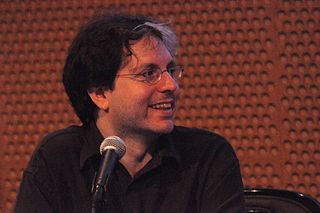
Douglas Wolk is a Portland, Oregon-based author and critic. He has written about comics and popular music for publications including The New York Times, Rolling Stone, The Washington Post, The Nation, The New Republic, Salon.com, Pitchfork Media, Vanity Fair, and The Believer. Wolk was the managing editor of CMJ New Music Monthly from 1993 to 1997, and hosted a radio show on WFMU from 1999 to 2001. He has four published books. The most recent, All of the Marvels, tours the Marvel comics universe via his project of reading all 27,000 Marvel superhero comics. In support of that project, in January 2019 he launched a members-only reading group, wherein participants collectively read and discuss a single issue of a Marvel comic book every day. He frequently appears discussing comics on the YouTube channel of Portland comic book store, Books with Pictures.
Palookaville is a comic book written and drawn by cartoonist Gregory Gallant, better known as Seth, and published by Drawn & Quarterly. The first issue appeared in April 1991 and it has been irregularly published ever since. The comics are generally portrayals filled with lost, lonely characters searching for meaning, often reaching back into the past.
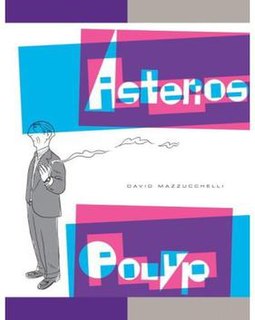
Asterios Polyp is a 2009 graphic novel by American cartoonist David Mazzucchelli.
Canadian cartoonist Chester Brown attracted the attention of critics and peers in the early 1990s alternative comics world when he began publishing autobiographical comics in his comic book Yummy Fur. During this period Brown produced a number of short strips and two graphic novels: The Playboy (1992) and I Never Liked You (1994). The personal and revealing deal with Brown's social awkwardness and introversion, and the artwork and page layouts are minimal and organic. In 2011 Brown returned to autobiography with Paying for It, an account of his experience with prostitutes.

The Great Northern Brotherhood of Canadian Cartoonists is a graphic novel by Canadian cartoonist Seth, published in October 2011 by Drawn & Quarterly. Like 2005's Wimbledon Green, The G.N.B. Double C was taken from Seth's sketchbooks. Seth describes it as a companion book and prequel to Green but its insistent "Canadianness" and lack of plot seem to place it more alongside another work of Seth's, George Sprott.
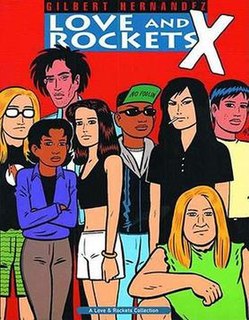
Love and Rockets X is a graphic novel by American cartoonist Gilbert Hernandez. Its serialization ran in the comic book Love and Rockets Vol. 1 #31–39 from 1989 to 1992, and the first collected edition appeared in 1993.
















